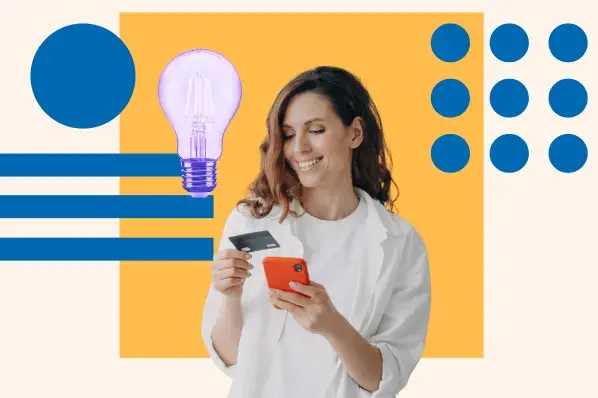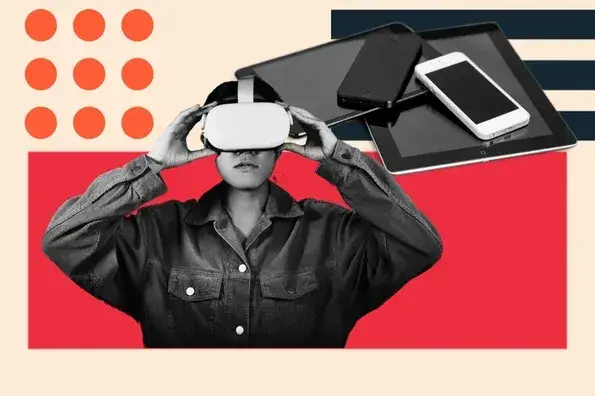Even in the last year, the customer experience has evolved in many ways (I’m looking at you, AI). Here, we’ll go over some of the main evolutions of the customer experience and discuss what the future of the customer experience could look like in 2024 and beyond.
Table of Contents
- Defining Customer Experience
- The Evolution of Customer Experience
- Customer Experience Trends for 2024 and Beyond
Defining Customer Experience
Customer experience, sometimes denoted as CX, refers to a customer's entire journey or sum of interactions with a business.
This can include the time a customer first hears about a brand all the way up to years after they purchase a product or service. So businesses need to consider the customer's perspective at every stage if they hope to create a holistic positive experience.
The Evolution of Customer Experience
The way brands do business has changed throughout history. But with the introduction of new technologies and the digital space in recent decades, we're moving through an unprecedented rate of change.
The customer experience, and how businesses manage it, has evolved significantly throughout the 2010s alone.
As highlighted in the image below, here are some of the biggest ways customer experience has evolved over the years.

Let's discuss each in more detail.
Combining Humans and Technology
One of the biggest changes to customer experience in the past 10 years that we'll continue to see moving forward is a blend of both human engagement and technology.
Ten years ago, automation was all the rage. Automation is important, but providing most communication through artificial intelligence left customers craving human interaction. Sure, customers could find instant responses, but the generic replies weren't always helpful or welcoming when clients had more complex issues.
Customers want to be able to find answers to easy questions quickly, which is where automation comes in. But offering human support is important, too, if you want customers to trust your brand. After all, 54% of customers say that their biggest frustration with chatbots is the number of questions they must answer before being transferred to a human agent.
Today and in the future, businesses must balance automation and human interaction to provide the best service (and experience) possible.
Understanding Customer Perspectives
When a business implements new software or shifts from offering call support to online chats, it might be making these changes based on budget or to improve employee productivity. And both of those facets are important for making decisions. But you can't ignore the customer's perspective when making decisions.
For example, let's say an executive for a garden supply business read online that chat is crucial for modern companies. The business then decides to cut their customer service phone line in favor of an automated chatbot. However, the business' primary audience is older adults who prefer ordering by phone or interacting with a human over navigating a chatbot and its automated responses.
In this case, I would’ve opted for a solution suitable to my target audience, like adding live chat or a chatbot in addition to the phone line, but also opened up a channel for those with a different preference. It would consider all of my audience segments before making big strategy shifts that could impact customer satisfaction.
Getting the Entire Company Involved in CX
In recent years, it has become increasingly clear that customer experience isn't something that just one department in a business can shape. Customer support agents and sales associates aren't the only employees that need to prioritize the customer experience.
Emplifi found that 43% of consumers place high importance on previous positive customer experience with a brand when considering a new purchase. So every level of a business should be thinking about ways to improve bad CX and maintain good CX.
For example, executives should consider how changes and innovations will shape the customer experience. And technicians should consider the end user experience when making changes to customer-facing apps or websites.
Juggling Multiple Forms of Communication
Years ago, businesses really only had to worry about communicating with clients in person during standard business hours.
When phones came to be, and later email, customers could reach businesses in different ways. Some had to adapt to provide support across various time zones.
The 2010s saw the rise of chatbots and website forms, introducing automated support.
Nowadays, businesses are expected to provide omnichannel support to interact with customers — from traditional phone and email to apps, live chats, video calls, and more. Social media DMs are the newest omnichannel support trend.
In fact, the number of social media users who sent DMs to get customer service in the past three months saw a 45% increase from just last year.
Defining Company Values
In light of the COVID-19 pandemic and both domestic and global events, most customers aren't willing to just support whatever company has the best deal or the funniest advertisements.
Customers expect businesses to be socially conscious and want to support businesses that share or reflect the same values they do. In fact, 49% of U.S. adults think brands should do more regarding social advocacy, and that’s even more important with younger generations. 53% of Gen Z think that companies should take a stance on social issues.
For a business to shape a positive customer experience, it needs to have a mission and goals that are forward-thinking and give back to the community. That might mean enacting sustainability initiatives, donating to charities, or supporting artisans over machine-made goods.
I do think that the stances you choose to take will vary depending on your business and target audience, but the message is clear: customers want to engage with businesses that care about more than just the bottom line.
Customer Experience Trends for 2024 and Beyond
Many trends that arose over the past ten years are now pivotal parts of providing an excellent customer experience, like omnichannel support. New trends arise in their place, and most will also leave a lasting impact on the field.
A lot has changed just this year alone, notably because of AI. Below, I’ll outline some of the most recent customer experience trends that will continue to take hold throughout the rest of 2023 and into 2024 and beyond.
1. AI-powered customer experiences.
I don’t see the 2023 AI adoption boom slowing down anytime soon. In fact, 72% of customer service professionals believe that, by 2024, most support reps will use some sort of AI/automation in their role, and I agree with them.
AI has many different applications and benefits in customer support, and below, I’ll go over two that I think have a significant influence on the customer experience because of their direct impact on how customers do or don’t succeed with the product or service you offer.
24/7 Customer Support
Consider this (exaggerated for emphasis) scenario: My blender suddenly stopped working, and I can’t figure out how to fix it. Worse yet, it’s 7 PM (after business hours), and my friends are coming over for dinner in 30 minutes.
I visit the business’ website hoping to find any sort of help, and wind up explaining my problem to its chatbot. It quickly directs me to the exact knowledge base article I need, and I get the blender up and running again. Problem solved, dinner saved.
How does this relate to AI? Nowadays, many chatbots use machine learning elements, like natural language processing, to bring customers the right solutions 24/7. When your customers don’t have to wait to get the help they need, they get a much more satisfying experience.
Jas Banwait Gill, growth manager at SwagMagic, offers 24/7 customer support with AI. Gill says, "ChatGPT bots power 24/7 connections with new and existing customers on our social media channels…It’s a customer-first approach to creating a personalized and seamless experience.”
Predictive Analytics
Predictive analytics is how you stay ahead of your customers by anticipating their needs and offering solutions before they know they need them. AI can analyze your customers’ past behaviors, like purchase history, identify patterns, and make predictions you can use to design a customer experience that meets their needs.
For example, if you’re an ecommerce business, you can use a customer's purchase history to design automated emails that remind them to reorder a product before it runs out. You’re simplifying and improving their experience by reducing potential future frustration before their product even runs out.
2. Continued importance of personalized experiences.
Consumers expect personalization now more than ever, making it an important building block to providing an excellent customer experience. Dany Tomsett, CEO and founder at UneeQ Digital Humans says: “Every interaction needs to be personalized, even through later aspects of the customer journey.”
As you’d expect, you can leverage AI and emerging technologies to create the personalization customers want, and other reps can account for its effectiveness as reps responding to our State of AI survey reported a significant level of trust in its ability to provide personalized experiences.
3. More emphasis on data security.
81% worry about how companies use their data, and they want control over how it is used.

Moving forward, prioritizing data security is a pivotal part of any good customer experience going into 2024 (and beyond). My recommendations for businesses are:
- Let customers opt-in to sharing their data in the first place (a.k.a for consent to collect their data)
- List your data practices and make them easy to understand
- Explain exactly how you’ll store data
- Be honest about any data breaches or security risks you might experience
If your business uses AI or has any plans to, I’d encourage you to be especially mindful since AI relies heavily on customer data. Review the privacy policies of the tools you use, and also develop guidelines for how you and your teams will use the data you collect.
Martina Bretous runs HubSpot’s Next in AI blog, and she’s spoken to countless AI experts. Etienne Cussol, compliance analyst and Termly, told her, “AI models’ reliance on massive amounts of data to learn and to generate is at complete odds with some of the core principles of data privacy, such as data minimization, purpose limitation, or privacy by design and by default.”
To stay mindful of your customer data, a tool like HubSpot’s User Permissions is a great option. You can give and revoke access for individual users to ensure customer data is only viewable by those it’s relevant to. I especially like that you can easily update permissions at any point, like when people change roles, and you can easily monitor how and when data is accessed.

Get started with HubSpot User Permissions
Keeping Up With the Evolution of CX
Customer experience has evolved in the past decade and it will only continue to shift in the years to come. Brands will need to continue to grow and change if they want to attract and retain clients.
The pandemic has shown that the stronger businesses are those who can quickly adapt to changes, both within and outside of their control. As long as you stay tuned into what your customers want (and need), you're setting yourself up for success in the future.
Customer Experience


.webp)





![Is The Customer Always Right? [What It Means + Why It Matters]](https://53.fs1.hubspotusercontent-na1.net/hubfs/53/customer-is-always-right-origin-1-20250202-6448090.webp)





